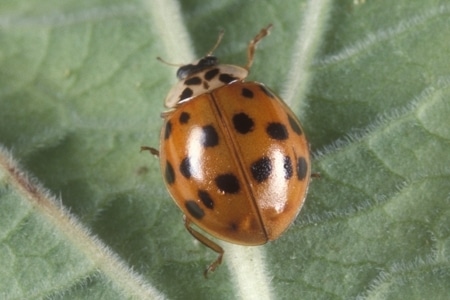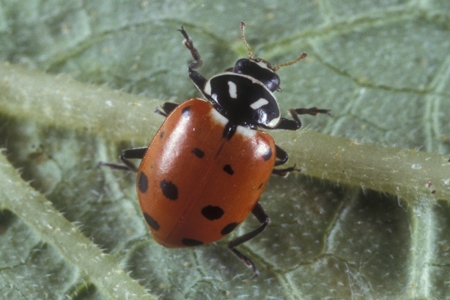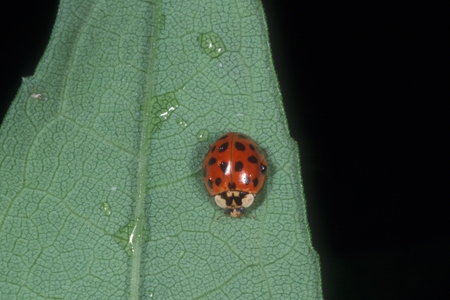Active Seasons




Ladybug Appearance and Size Facts
Ladybugs, often considered charming insects, are beneficial predators in gardens and homes. Despite their positive reputation as being beneficial in your yard because their larval stage eats ornamental pests such as aphids, adult lady bugs can still be a nuisance if getting indoors.
Also known as lady beetles or ladybird beetles, ladybugs typically have a round or oval-shaped body with bright red or orange coloration and range in size from about 1/32 to 3/8 inch, with variations among species. Some species may exhibit variations, including shades of yellow or even black. Their elytra, the hardened forewings, often feature distinct black spots. These spots are their most recognizable feature, although their number and arrangement vary.
Distinguishing Ladybugs From Other Beetles
Ladybugs are distinct from other beetles due to their characteristic shapes, colors, and spots. While their appearance is generally unique, professional pest controllers can identify the specific species in your home to implement the most effective pest management methods.
We offer pest control for ladybugs in the following locations and their surrounding areas:

Behavior and Habitat of Ladybugs
Ladybugs are valuable in gardens as they feed on aphids and other harmful insects, contributing to natural pest control. Ladybugs are predators, primarily feeding on soft-bodied insects like aphids. Their presence in gardens is often beneficial. However, during certain times of the year, they may seek shelter indoors, becoming household pests. In the fall, ladybugs may gather in large numbers on the sides of buildings or inside homes to overwinter. While harmless, their presence indoors can be a nuisance.

Signs of Infestation of Ladybugs
Ladybugs are generally not considered harmful but can become overwhelming if left unchecked. A significant indoor presence of ladybugs may indicate they’ve decided to overwinter in your home. This can be especially dangerous if they set up shop in your electrical box, leaving you at risk of damage to your circuits.

Tips for Prevention of Ladybugs
As with other pests, your priority when preventing a ladybug infestation is eliminating entry points and creating an inhospitable environment for overwintering. Properly seal windows, doors, and other openings, and limit outdoor lighting, which may reduce their presence around homes since they are attracted to light.
Getting Rid of Ladybugs
While ladybugs are generally harmless, removing them from indoor spaces can be achieved through gentle methods such as using a vacuum cleaner or guiding them outdoors. This can be a difficult task, which is why an experienced pest control specialist from Hulett Environmental Services best handles it.



